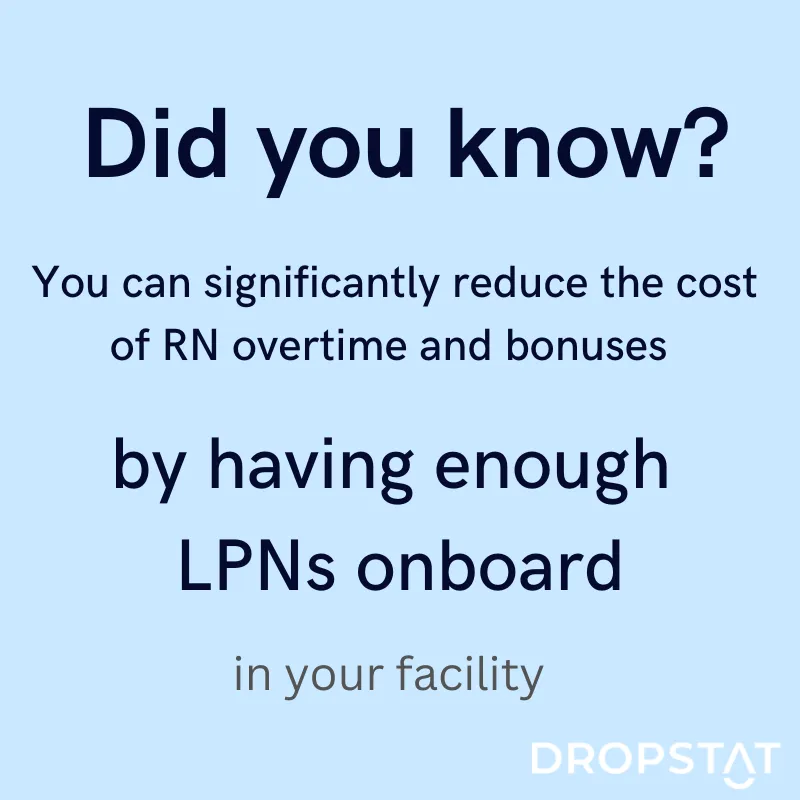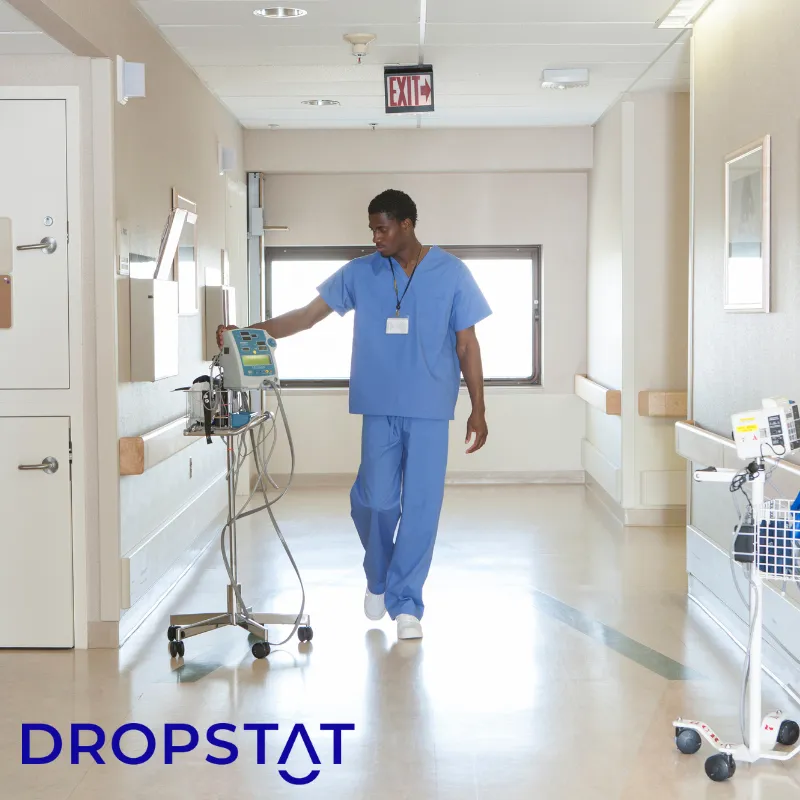Dropstat’s Clickable Guide to Types of Nurse Specialties
What do LPN nurses do?
Licensed practical nurses (LPNs) assist primary medical professionals in treating patients. LPN responsibilities typically include; monitoring patient vitals, supporting patients with activities of daily living, and updating RNs on patient status.
Healthcare facilities hire LPNs to create a practical division of labor to maintain a more balanced and reliable work environment.
What is an LPN’s scope of practice?
LPNs are qualified to manage many of the same tasks that RNs usually oversee. These activities involve:
- Administering some medications
- Updating patient records and keeping RNs and MDs up-to-date
- Recording vitals
- Prioritizing patient comfort and hygiene
- Assisting with patient transfer
- Collecting specimens
However, RNs are more directly involved in generating care plans and administering medication that the LPN is not licensed to dispense (IV medication, antineoplastic drugs. They are also responsible for charting, assessing wounds, delegating work, confirming that documentation and records are correct, and taking on greater leadership roles.
LPN travel nursing jobs
Although job responsibilities for LPNs vary by state, the Nurse Licensure Compact (NLC) enables RNs and LPNs to gain a nursing license that allows them to deliver care in other states that are part of the NLC. However, it is important to note that in California and Texas, LPNs are known as licensed vocational nurses (LVNs).

What is an LPN’s salary vs. a travel LPN’s salary?
The average yearly salary as of May 2022 is $48,070, while the average annual salary of a travel LPN is $64,676. LPNs who are certified in specialized areas such as gerontology, acute/critical care, psychiatry, mental health, and substance abuse can command a higher salary. Hiring LPNs with additional certification relieves some of the workload from RNs and will be more cost-effective than hiring additional RNs. Facilities may also consider hiring LPNS with the skillset to receive further training in specialized areas such as IV Therapy, Long-Term Care, and Pharmacology since the growth opportunities will help retain your staff and will be more cost-effective than hiring nurses that already have this training.
LPN Licensing Process
Many individuals interested in nursing often become licensed as an LPN/LVN to gain experience and education. Many community colleges and other educational institutions provide LPN/LVN programs that range between one and two years, through which participants gain knowledge in core subject areas such as pharmacology alongside clinical experience opportunities. After completing this training program, an LPN must pass the National Council Licensure Examination (NCLEX) before practicing to be considered a licensed LPN.
LPN vs. RN
An RN’s scope of practice requires a more significant commitment to leadership and management, given that RNs usually supervise LPNs and other nursing roles. They are also more involved in generating and carrying out patient care plans alongside doctors and dispensing medication LPNs are not qualified to administer. Unlike the path to becoming an LPN, becoming an RN typically requires significantly more schooling for many organizations and the NCLEX specific to registered nursing. Ultimately, an RN license allows for greater autonomy and responsibility on the job, such as completing diagnostic tests.

LPN vs. CNA
While LPNs serve a crucial role in assisting RNs with the workload, CNAs can also relieve some of the daily pressures. However, CNAs and LPNs deliver different types of care. While LPNs are more involved with typical nursing functions such as medication administration, CNAs usually assist with activities of daily living like hygiene, using the restroom, eating, and patient transport. Training to become a CNA requires 4-12 weeks of instruction and clinical exposure. Like RNs and LPNs, becoming a CNA requires passing the state’s CNA exam.
Medical assistant vs. LPN
Medical assistants also help to create a more balanced division of labor. Usually, medical assistants are part of administrative positions, such as keeping track of patient information through electronic health records and insurance while coordinating appointments. They also help RNs with measuring vital signs, although the skills required of a medical assistant are less focused on clinical abilities than LPNs. Unlike other medical professionals, medical assistants are not required to obtain an official education. However, completing a medical assistant training program can increase overall knowledge and skill set.
Does your healthcare facility need more LPNs?
Upon analyzing operation costs, many healthcare organizations may find that their unnecessary spending is often associated with RN overtime and bonuses. One way to reduce these costs is to hire LPNs to support RN workload, specifically completing tasks such as vitals and updating patient records that RNs would otherwise complete in overtime. Tracking nurse overtime at your facility and the shifts lacking in staff support may be the key to minimizing expenses.
Take full advantage of Dropstat to find out whether your facility needs to hire additional LPNs and start saving on expensive RN overtime and bonuses. Schedule a demo today and get started.







